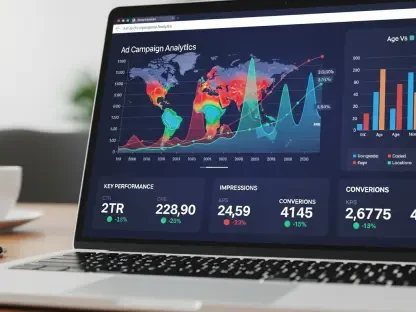In today’s fast-paced digital marketing environment, data-driven decisions have become critical to survival. As businesses strive to understand customer behavior and optimize their strategies, the tools they use have evolved dramatically. One of the most significant developments in digital analytics over recent years is the shift from Universal Analytics (UA) to Google Analytics 4 (GA4). This transition marks a substantial evolution, offering marketers enriched insights into campaign performance with a higher degree of precision. But how does GA4 perform under scrutiny, and what are its implications for businesses navigating this digital landscape?
Analyzing the Core Features and Performance of GA4
Google Analytics 4 emerges as a robust successor to Universal Analytics, designed to align with the changing demands of digital marketing analytics. One of the core principles of GA4 is its customizable reporting interface, which contrasts sharply with the predefined reports that were typical of UA. This flexibility allows users to tailor reports directly to their business needs, granting them enhanced control over data collection and analysis. This newfound adaptability is vital in a world where data interpretation often determines market outcomes. However, such customization requires an initial investment in learning, as it differs significantly from prior reporting structures.
GA4 stands out with its transition to an event-based tracking model, a notable shift from UA’s approach. This model provides a unified method for tracking user interactions across various touchpoints, including web and mobile. By focusing on user actions rather than just pageviews, GA4 allows marketers to gain deeper insights into user journeys, thereby improving conversion tracking and goal setting. Its methodology supports more granular data that aligns with modern content consumption patterns, serving as an enabler for refined marketing strategy development.
Navigating New Trends and Advancements
Recent developments in GA4 reflect ongoing innovation. Continuous updates provide marketers with innovative tools that adapt in real time to shifts in digital engagement trends. Among the notable advancements are sophisticated capabilities in analyzing multichannel funnels. GA4 now offers enhanced visibility into user acquisition channels, thereby empowering businesses to strategically target and refine their marketing efforts based on precise data. This trend toward a more interconnected analysis represents a clear leap forward in the realm of data analytics.
In real-world applications, GA4 has been effectively deployed across diverse industries, including eCommerce, finance, and retail. These sectors benefit from GA4’s ability to seamlessly integrate web and app data, offering more comprehensive insights into consumer behavior across platforms. For instance, an online retailer can leverage GA4 to visualize multichannel user journeys, gaining insights into the pathways leading to conversions. Such implementations underscore the meaningful impact GA4 can have on strategy execution and business outcomes.
Addressing Challenges and Charting the Future
While GA4 offers numerous advantages, it is not without challenges. Users, especially those familiar with UA, may find the transition to GA4 daunting due to its different interface and tracking mechanics. Technical barriers such as data discrepancies and compatibility issues further complicate the adoption process. Nonetheless, ongoing updates and user feedback channels are continuously shaping GA4 to be more intuitive and robust, addressing these barriers with time.
Looking ahead, GA4 promises further breakthroughs in digital marketing analytics. Its future lies in refining its predictive capabilities and expanding integrations with other Google services. As digital ecosystems become more seamless and interconnected, GA4’s potential will likely grow, enhancing its long-term impact on marketing and data analysis. Its trajectory points toward becoming an indispensable tool, aligning closely with future technological trends and business needs.
Conclusion and Forward-Looking Assessment
Ultimately, the transition to Google Analytics 4 signifies a major evolution in digital analytics platforms. GA4’s current state reveals a dynamic tool that provides granular insights through customizable reports and event-based tracking models. Despite its learning curve and technical challenges, it holds substantial potential for enhancing market strategies through enriched user behavior analysis. The transition to GA4 has underscored the importance of adaptability in digital marketing, preparing businesses to stay competitive in a rapidly changing landscape. As marketers continue to adapt, GA4 is set to become a cornerstone of data-driven decision-making, paving the way for future advancements in digital analytics.









